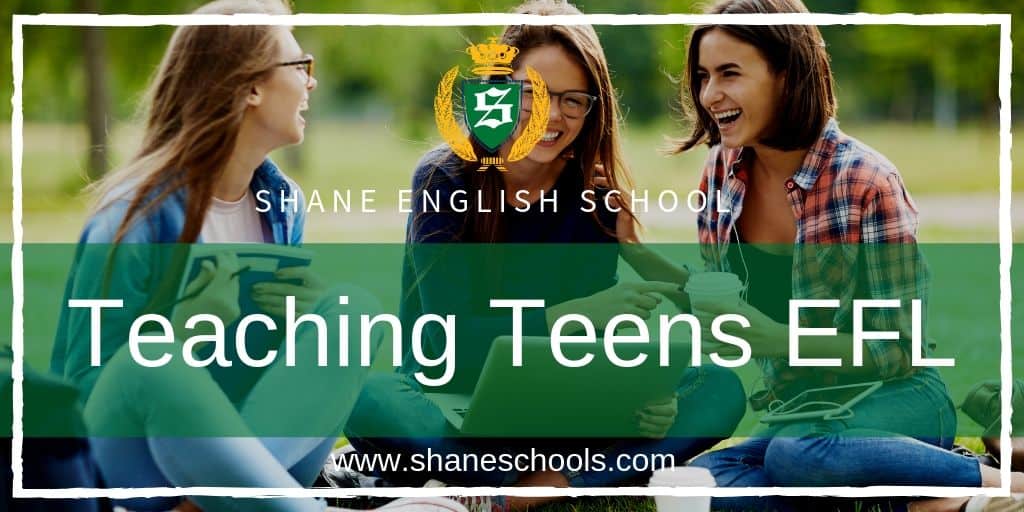Working with early-teenaged students can be frustrating. Many of your old tricks won’t work, and they may wreak havoc on your old ideas for scoring systems. Don’t despair!
Teaching teens EFL is certainly challenging, but it’s not impossible. They simply have different needs. With some adjustments, the PPP method can be applied just as effectively for teenaged students as it can for young learners.
Motivation for Teens
This age group responds well to incentive schemes, as long as there is a tangible incentive (i.e. amount of homework). The students may not care about being winners, but do not like the consequences associated with being the “losers.” (e.g. extra homework, winners set the losers a spelling test, etc.)
Scoring to determine said winners (and losers) should incorporate a greater cerebral input, rather than just points on the board. Games like Connect 4, Battleship, Blockbusters, or Jenga encourage concepts such as strategy, deduction, and guesswork.
Use teams as more than just as competitive entities. Try to move away from the idea of “safety in numbers” toward study groups and peer support. Think of class as a productive and social environment.
The greatest influencer and motivator in the classroom is the teacher. If the students are not feeling motivated, the teacher needs to look at what he or she is or is not doing. The best advice is to listen to your students. They will tell you what they find interesting if you remember to ask.
Lesson Planning for Teens
It’s important to plan thoroughly. This is an age group that can sniff out an unprepared teacher in a heartbeat. Going in with a clear plan and a number of ideas up your sleeve is the best way to avoid a group of sullen students staring at you in silence.
All the normal elements of a lesson should be in place. Presentation, Practice and Follow-up is the easiest way to get new language in place. However, once the language has been mastered, you can introduce other methods, such as Task-Based Learning, Discovery, Test-Teach-Test, etc. Don’t forget to watch your timing and interaction patterns!
This age group will still appreciate a balance of physical and non-physical activities.
Don’t forget Phonics! It’s an important skill that should always be covered.
The PPP Method for Teens
The PPP method applies just as well to teens (and adults) as it does to young children. Many of the activities can even be repurposed. Older students still like to play games, even if having fun in class is suddenly uncool. All it takes is a different system of motivation, and a bit of re-framing, to get class on track.
Presentation for Teens
- Lessons of older students often include a greater emphasis on skills learning (e.g. skimming, scanning, etc.). It’s dangerous to assume the students already know how to do this.
- The teacher needs to put the language into the most digestible and fun context possible. Try to make it relevant to the students’ interests. For example, if the students keep using the same verb over and over again, teach them synonyms.
- I like eating ice cream.
- I like devouring ice cream.
- I like gorging on ice cream.
- I like digging into ice cream.
- Present the language using CDs or texts.
- There will often be multiple presentations, practices and follow-ups in the same lesson.
- For higher level grammar points, follow this procedure:
At a glance, here’s a quick list of things you can do to present teens with new target language:
- Set a context
- Elicit as much as possible from the students.
- Use TPR/flash cards/drawings/realia.
- Show the structure on the board.
- Draw a simple timeline, if appropriate.
Click here for more information on the presentation phase of the PPP method.
Practice for Teens
All levels require drilling. It’s the only way to get the structure into the short-term memory. Many of the same drills used in lessons with younger students can also be used effectively with teen EFL students. Give things a try and think of ways to tweak activities to make them more interesting to older students (less running, knocking down towers rather than building them up, more writing). There should still be a progression from teacher-led drills to student-led drills.
Click here for more information on the practice phase of the PPP method.
Production for Teens
Freer activities are important to give students a chance to use the language in “real-life” situations. They give the students a chance to gain confidence and greater understanding of how and when the language is used. It also gives the teacher a chance to see if the students have really absorbed the target language.
Students at this age enjoy activities that employ a bit of brain work. Guessing games, memory testers, information gaps, pair work, scruples, taboo, stop the bus, writing role-plays, etc. The more creative the teacher, the more interesting the class.
Click here for more information on the production phase of the PPP method.
Bookwork
Bookwork is a consolidation of what the students have learned in the first part of the lesson. Often, a textbook or workbook provides additional contexts for the language, thus expanding what the students know. Because the pages are sometimes busy and involved, the teacher needs to think about how he or she wants to proceed. Pairwork and team activities can be very effective.
A version of this article originally appeared in Shane English School’s Teaching English to Young Learners (TEYL) program, which is part of new teachers’ orientation.

We're hiring!
With schools around the world, Shane English School always has exciting new opportunities to offer.


